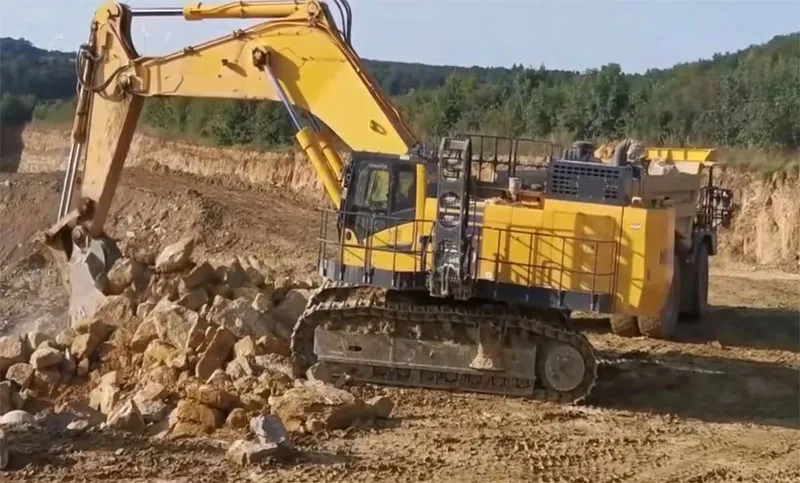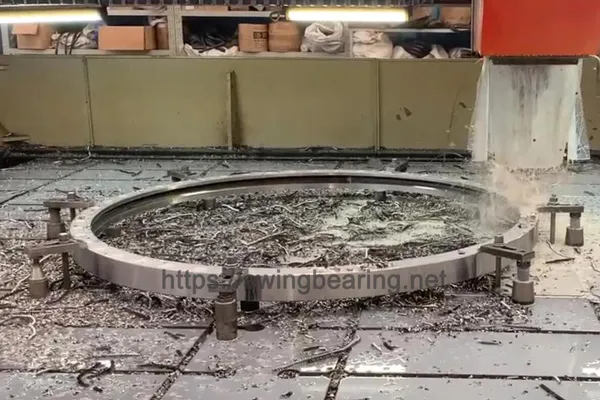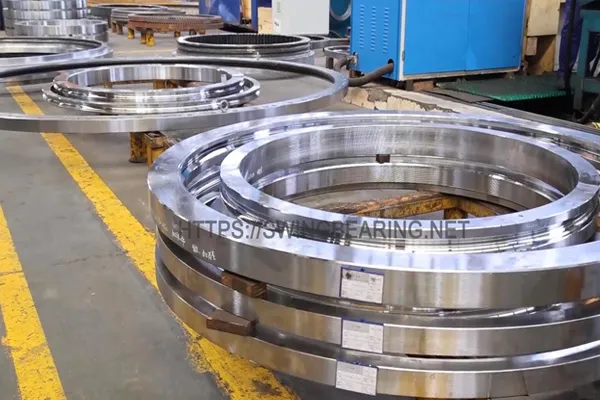
Swing bearings are crucial components in Caterpillar excavators, ensuring smooth and reliable rotation of the machine’s upper structure. Proper inspection and maintenance of these bearings are essential for maximizing the efficiency and longevity of the equipment. In this blog, we will delve into the specifics of inspecting swing bearings, covering key areas to focus on and offering detailed steps to ensure thorough assessments.
Swing bearings in Caterpillar excavators play a vital role in enabling the 360-degree rotation of the excavator’s upper structure. This rotational capability is essential for the machine’s versatility and operational efficiency. Regular inspection of swing bearings helps detect early signs of wear or damage, preventing costly breakdowns and ensuring smooth operation.
Swing bearings, also known as slewing rings, are large-sized bearings designed to handle axial, radial, and moment loads simultaneously. They are typically composed of an inner and outer ring with rolling elements in between, such as balls or rollers. These bearings support the rotational movement of the excavator’s upper structure on its base.
Swing bearings can experience various issues due to the demanding conditions they operate under. Common problems include wear, corrosion, lubrication failure, and seal damage. Identifying these issues early through regular inspection is crucial for maintaining the performance and safety of the excavator.
During a visual inspection, examine the swing bearing for any signs of physical damage such as cracks, chips, or deformations. Look for any abnormalities in the bearing races and rolling elements. Physical damage can compromise the structural integrity of the bearing and lead to premature failure.

Inspect the seals around the swing bearing for wear or damage. Damaged seals can allow contaminants to enter the bearing, leading to increased wear and potential failure. Ensure that the seals are intact and properly seated to maintain effective lubrication and protection against debris.
Proper lubrication is essential for the smooth operation of swing bearings. Check the lubricant levels regularly and top up if necessary. Ensure that the lubricant used is of the recommended type and grade for the specific operating conditions of the excavator.
Examine the quality of the lubricant for signs of contamination or degradation. Contaminated or degraded lubricant can lead to increased friction and wear. Look for any metal particles, dirt, or moisture in the lubricant, as these can indicate potential issues within the bearing.
Use a dial indicator to measure the axial and radial play of the swing bearing. Excessive play can indicate wear or damage to the bearing components. Compare the measured values with the manufacturer’s specifications to determine if the bearing is within acceptable limits.
Keep detailed records of the bearing play measurements taken during each inspection. This documentation helps track the bearing’s condition over time and identify any trends or changes that may indicate emerging issues.
Rotate the excavator’s upper structure slowly and check for any roughness, binding, or unusual noises. Smooth and consistent rotation is essential for the proper functioning of the swing bearing. Any irregularities may indicate internal damage or misalignment.

Listen for any abnormal sounds such as grinding, clicking, or knocking during the rotation of the upper structure. These sounds can be indicative of bearing damage or insufficient lubrication. Investigate the source of the noise and address any underlying issues promptly.
Perform a static load test to assess the bearing’s ability to support the excavator’s weight. Carefully lift the upper structure and observe any movement or deflection in the bearing. Excessive movement can indicate wear or damage to the bearing components.
Ensure that the load is evenly distributed across the bearing during the test. Uneven load distribution can cause premature wear and damage to the bearing. Make any necessary adjustments to achieve balanced load distribution and prolong the bearing’s lifespan.
Regularly clean the swing bearing and its surrounding area to remove dirt, debris, and contaminants. Contaminants can accelerate wear and reduce the bearing’s performance. Use appropriate cleaning methods and solvents to maintain a clean and functional bearing.
After cleaning, conduct a thorough inspection of the bearing to identify any signs of wear or damage that may have been obscured by contaminants. Cleaning also allows for a more accurate assessment of the bearing’s condition and helps maintain optimal performance.
Develop a lubrication schedule based on the manufacturer’s recommendations and the operating conditions of the excavator. Regular lubrication helps reduce friction and wear, ensuring smooth operation and extending the bearing’s lifespan.
Select the appropriate lubricant for the swing bearing, considering factors such as load, speed, and environmental conditions. Using the right lubricant enhances the bearing’s performance and minimizes the risk of lubrication-related issues.
Monitor the temperature of the swing bearing during operation. Elevated temperatures can indicate excessive friction or inadequate lubrication. Use infrared thermometers or temperature sensors to measure the bearing’s temperature and address any issues promptly.
Investigate any significant temperature variations or spikes in the bearing. Identify the root cause of the temperature increase and take corrective actions to prevent further damage. Proper temperature monitoring helps maintain the bearing’s performance and reliability.
Regular inspection and maintenance of swing bearings in Caterpillar excavators are crucial for their longevity and optimal performance. By following the detailed inspection procedures outlined in this blog, you can detect early signs of wear or damage and take appropriate measures to address them. Proper lubrication, load testing, and temperature monitoring are essential for maintaining the swing bearing’s functionality and extending its service life. Implementing these practices helps ensure the efficient operation of your excavator and minimizes downtime due to bearing-related issues.
A: Swing bearings should be visually inspected daily, with more thorough inspections conducted weekly or monthly based on usage and operating conditions. Regular inspections help detect early signs of wear or damage.
A: Signs of inadequate lubrication include increased friction, unusual noises, elevated bearing temperatures, and visible contamination in the lubricant. Regularly checking and maintaining proper lubrication levels is crucial for bearing performance.
A: Yes, damaged seals can allow contaminants to enter the bearing, leading to increased wear and potential failure. Inspecting and maintaining seal integrity is essential for protecting the bearing and ensuring its longevity.
A: Load testing helps assess the bearing’s ability to support the excavator’s weight and identify any excessive movement or deflection. Ensuring balanced load distribution during testing prolongs the bearing’s lifespan.
A: Temperature monitoring helps detect excessive friction or inadequate lubrication in the bearing. Identifying and addressing temperature variations promptly can prevent further damage and maintain bearing performance.
A: Documenting inspection measurements allows for tracking the bearing’s condition over time, identifying trends, and making informed maintenance decisions. Accurate records help ensure the bearing’s longevity and optimal performance.